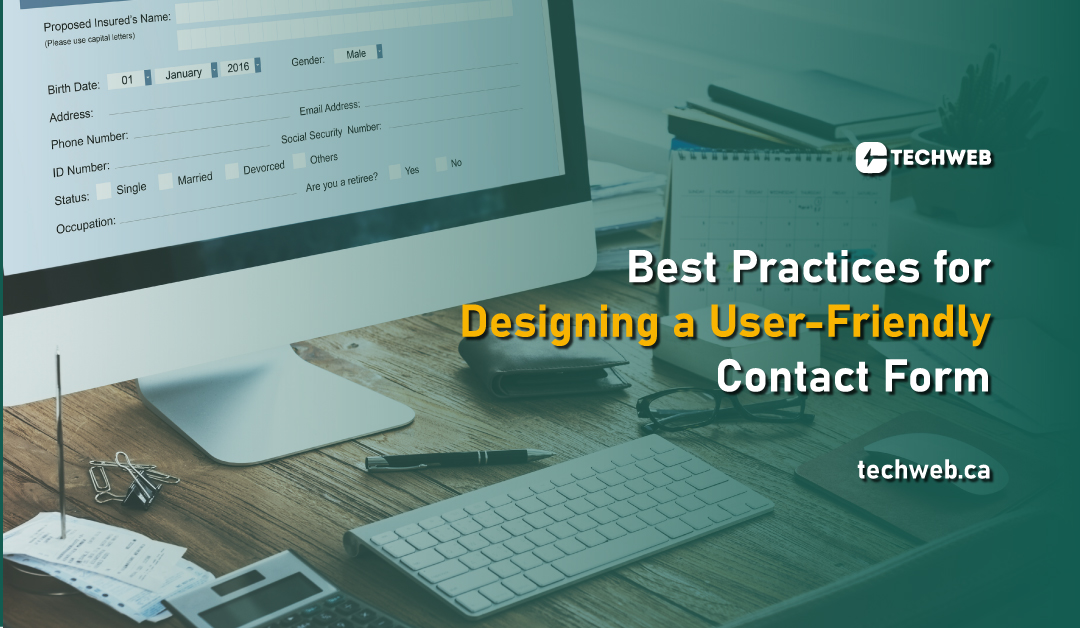In this blog, we’ll delve into the best practices for designing a contact form that is not only aesthetically pleasing but also intuitive, fostering a seamless and positive user experience.
1. Clarity and Simplicity in Design
The cardinal rule for a user-friendly contact form is clarity. Keep the design simple, ensuring that users can quickly comprehend the purpose of each field. A clean layout, clear labels, and ample spacing contribute to an intuitive and inviting form.
2. Strategic Placement on the Page
Consider the strategic placement of your contact form on the page. Typically, placing the form above the fold or in a prominent location ensures that users encounter it without having to scroll extensively. This placement enhances visibility and encourages engagement.
3. Limit Form Fields Thoughtfully
Minimize friction by limiting the number of form fields to the essentials. Ask only for the information you absolutely need. Lengthy forms can be intimidating, and users are more likely to abandon them. Strike a balance between collecting necessary information and respecting the user’s time.
4. Mobile Responsiveness is Non-Negotiable
In a mobile-centric world, ensure that your contact form is fully responsive. Test its functionality on various devices to guarantee a seamless experience for users accessing your site on smartphones or tablets. An optimally designed mobile form contributes to overall accessibility and user satisfaction.
5. User-Friendly Error Messages
Design informative and user-friendly error messages. When a user makes a mistake or forgets to fill in a required field, the error message should be clear, concise, and positioned near the relevant field. Guide users on how to rectify the error without causing frustration.
6. Smart Use of Placeholder Text
Use placeholder text strategically to provide context for each form field. Placeholder text can offer examples, suggestions, or additional information about the required input. However, ensure that the placeholder text doesn’t disappear once users start typing; instead, transition it to a label above or beside the input.
7. Logical Form Field Order
Organize your form fields in a logical and sequential order. Start with basic information like name and email before progressing to more specific details. A well-thought-out flow ensures that users can navigate through the form effortlessly.
8. Visual Cues for Mandatory Fields
Clearly indicate which fields are mandatory with visual cues such as asterisks (*) or a different color. This transparency helps users understand the required information, reducing errors and streamlining the submission process.
9. Progress Indicators for Multi-Step Forms
For longer forms with multiple steps, incorporate progress indicators. Users should have a clear understanding of where they are in the process and how many steps remain. This visual guide instills a sense of control and reduces the perception of a time-consuming task.
10. Reassuring Confirmation Messages
After submission, provide users with a reassuring confirmation message. Clearly communicate that their message has been received, and if applicable, offer an estimated response time. This acknowledgment enhances user confidence and sets the expectation for further communication.
11. Regularly Test and Optimize
Regularly test your contact form to identify any potential issues or areas for improvement. Conduct usability testing to gather feedback on the user experience. Analyze form analytics to understand user behavior and optimize the design based on the collected data.
Conclusion
A user-friendly contact form is not just a functional component of your website; it’s a gateway to meaningful connections with your audience. By adhering to these best practices—from maintaining simplicity and clarity to optimizing for mobile responsiveness—you can design a contact form that not only captures essential information but also provides a positive and frictionless experience for users. Remember, a well-designed contact form is a testament to your commitment to user satisfaction and can be a decisive factor in building trust and fostering valuable interactions with your audience.

